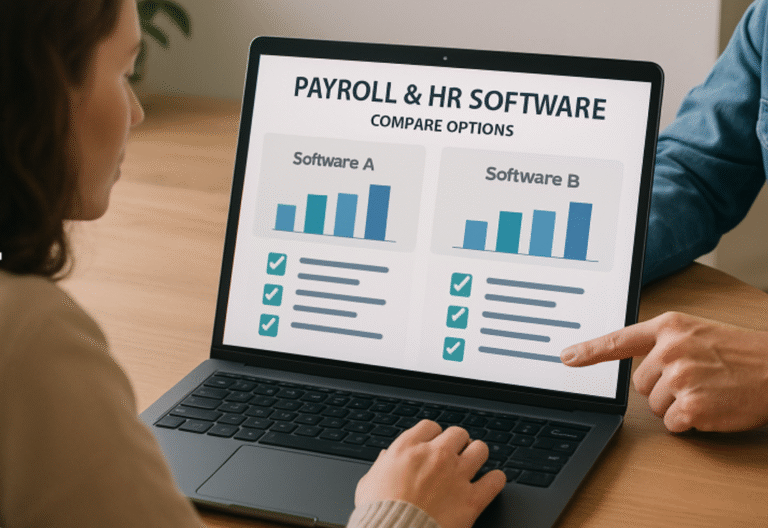How to Avoid Costly Errors in Cross-Border Payments

You don’t think about the plumbing until the faucet fails. The same goes for international payments until a transaction stalls halfway across the world, costing time, trust, and sometimes even revenue.
It starts with a few numbers and letters. A SWIFT code.
Also known as a Bank Identifier Code (BIC), a SWIFT code is what allows banks to recognise each other across borders. Without it, your payment can end up looping through the wrong corridors of the financial system or worse, bouncing back entirely. And when you’re a business sending or receiving money globally, that’s not a risk you want to gamble on.
This is where a swift code checker comes in as a surprisingly essential guardrail for anyone handling global transactions.
1. Why SWIFT Codes Are a Big Deal in Business Banking
SWIFT codes act as international routing instructions for money. Think of them like a global postal code, but for banks. Each one points to a specific institution, branch, and sometimes even department. A single character out of place, and your funds could take a detour sometimes into holding patterns, sometimes into the void.
For individuals sending money overseas once in a blue moon, this might feel like a minor inconvenience. But for startups paying contractors across Asia, or SaaS businesses collecting subscriptions from the US and Europe, it’s a business-critical detail.
2. The Risk You Don’t See Coming
The real headache isn’t just a delayed payment. It’s the domino effect it sets off.
- Employees don’t get paid on time.
- Vendors withhold services until the issue is fixed.
- Clients lose trust in your reliability.
And behind the scenes? Hours spent in back-and-forths with banks, correction requests, proof documents, and sometimes even penalties for breaching contractual timelines.
In B2B transactions, reputation is currency. A botched SWIFT code can do more damage than you’d expect.
3. So, What Does a Swift Code Checker Actually Do?
A swift code checker is a tool that helps you verify if the SWIFT/BIC code you’re about to use is accurate, active, and correctly linked to the financial institution you’re intending to deal with. It’s like spellcheck, but for cross-border money movement.
These tools often do more than simple validation. A good swift code checker might:
- Confirm the bank name and country.
- Detect whether the code matches the correct branch.
- Flag outdated or decommissioned codes.
- Warn you of commonly mistyped combinations.
And unlike emailing a banker and waiting 48 hours, most tools do this instantly.
See also: Strategic Financial Solutions for Entrepreneurs 3294072980
4. B2B Payments Are Getting Faster—Mistakes Shouldn’t Be
In today’s digitised finance landscape, speed is everything. Businesses expect same-day settlement, real-time tracking, and cross-border visibility. But speed without accuracy is a liability. SWIFT-related errors are one of the quietest causes of delays in B2B payments. Often, they don’t get noticed until after a failed transaction. With the right swift code checker integrated into your workflow, these blind spots become easier to catch before they snowball.
5. Building a Payment Checklist for Your Team
For finance managers, it helps to build a lightweight, repeatable checklist for every international transaction:
- Verify SWIFT code with a checker – Preferably before adding the payee to your system.
- Confirm payee details via secondary channel – Email verification is great, but if high-value, go beyond.
- Keep a reference log – Maintain a record of previously used codes to avoid duplicating errors.
- Enable two-level approvals for large transfers – Reduces the chance of manual input mistakes.
- Use platforms with built-in validation – This reduces dependency on memory or Google searches.
It doesn’t have to be bureaucratic. Just consistent.
6. A Thought for Global Teams
With teams becoming increasingly global, even small companies are now functioning like mini multinationals. Whether it’s a content team in Manila, a developer in India, or an advisor in the Netherlands, payments are borderless. And borderless transactions come with border-level complexity. A swift code checker isn’t just about avoiding a typo. It’s about building financial systems that match the distributed nature of modern teams. You don’t need a massive finance department—you just need the right guardrails.
7. Conclusion: Think of It as a Seatbelt
You won’t remember using it every time. But the one time you need it, you’ll be grateful it was there. That’s the role of a swift code checker in a business’s cross-border operations. It’s not flashy. It won’t make headlines. But it’s one of those quiet enablers that keep operations humming. As businesses scale and their banking gets more complex, tools like these aren’t optional. They’re the basics—the new normal.




